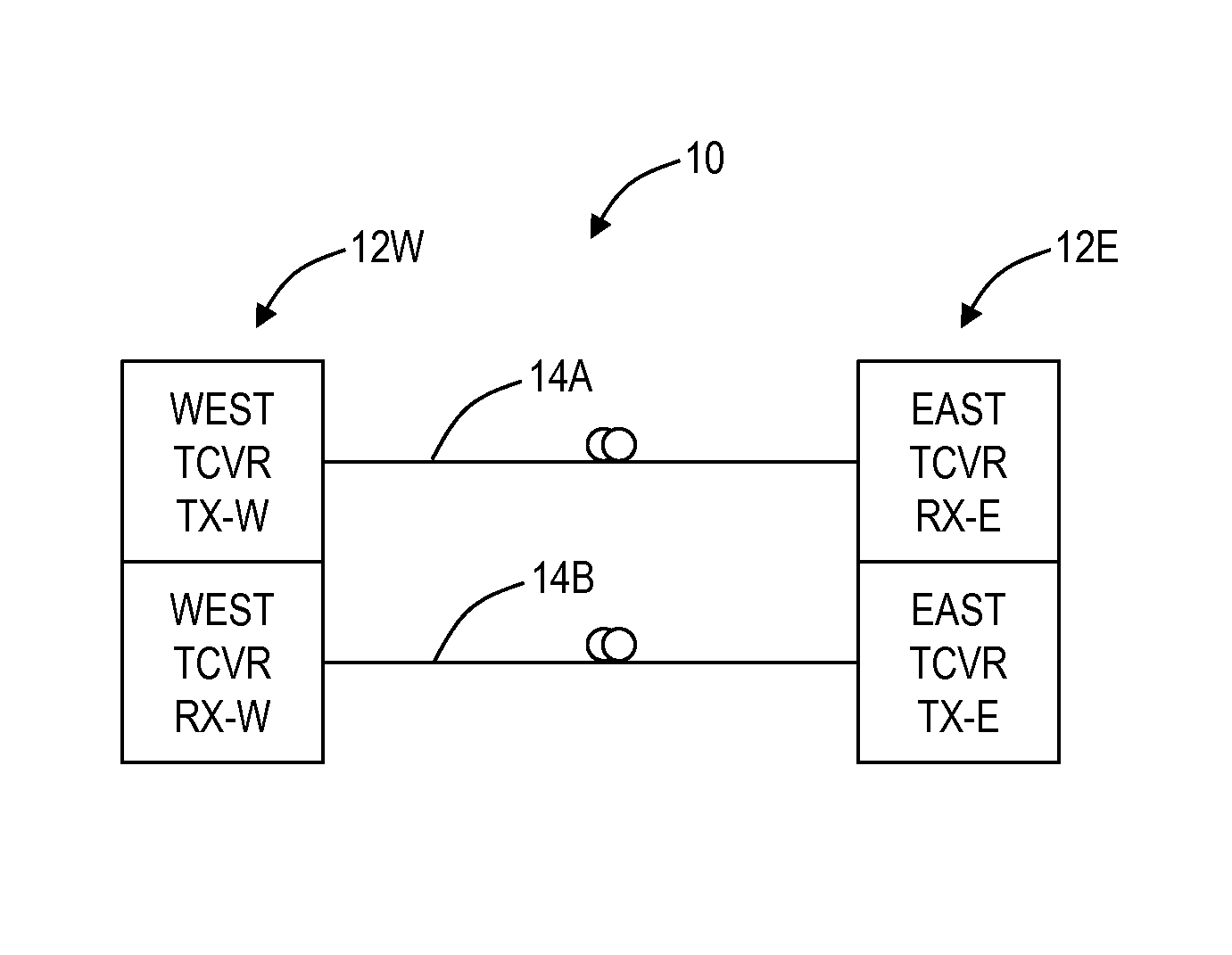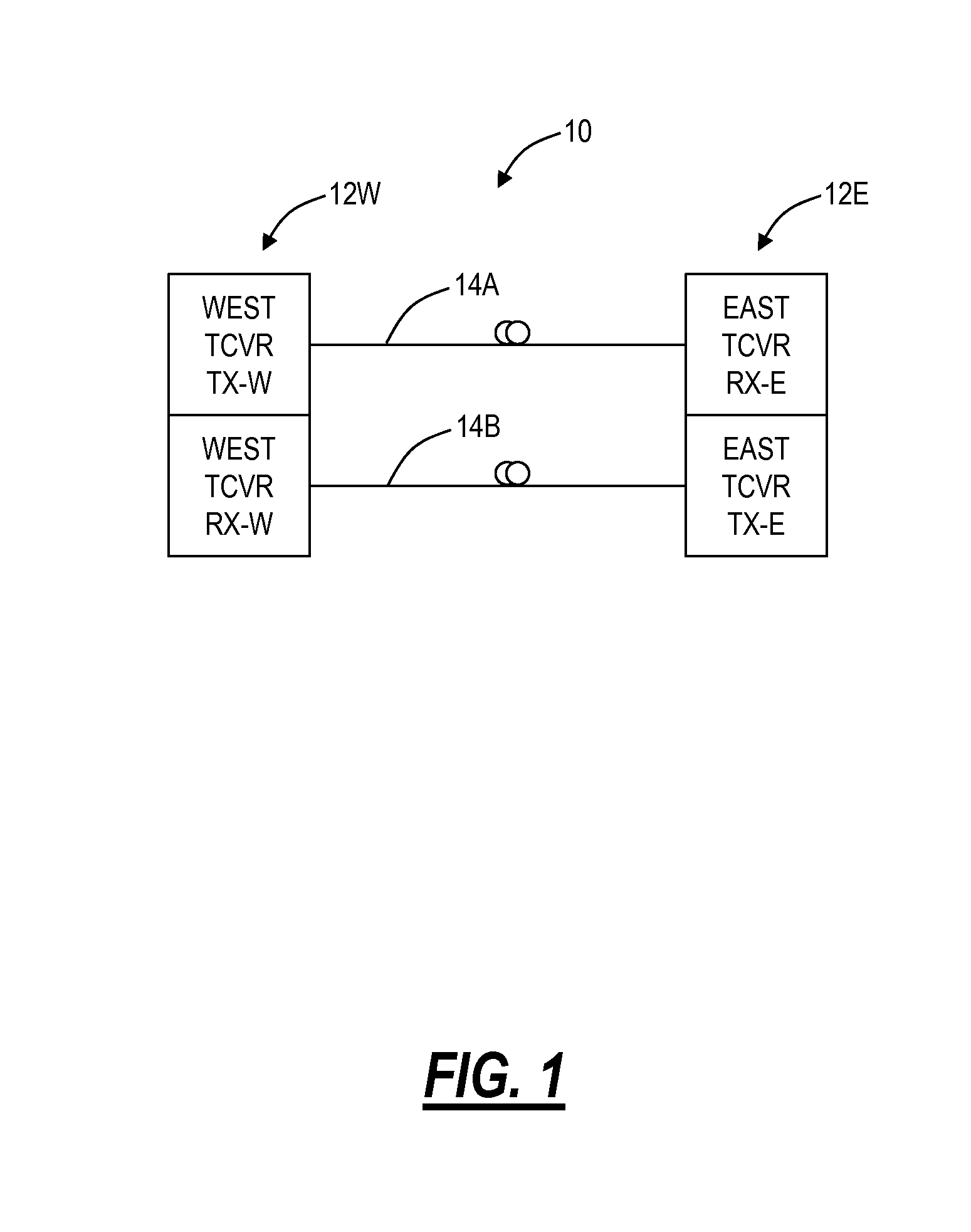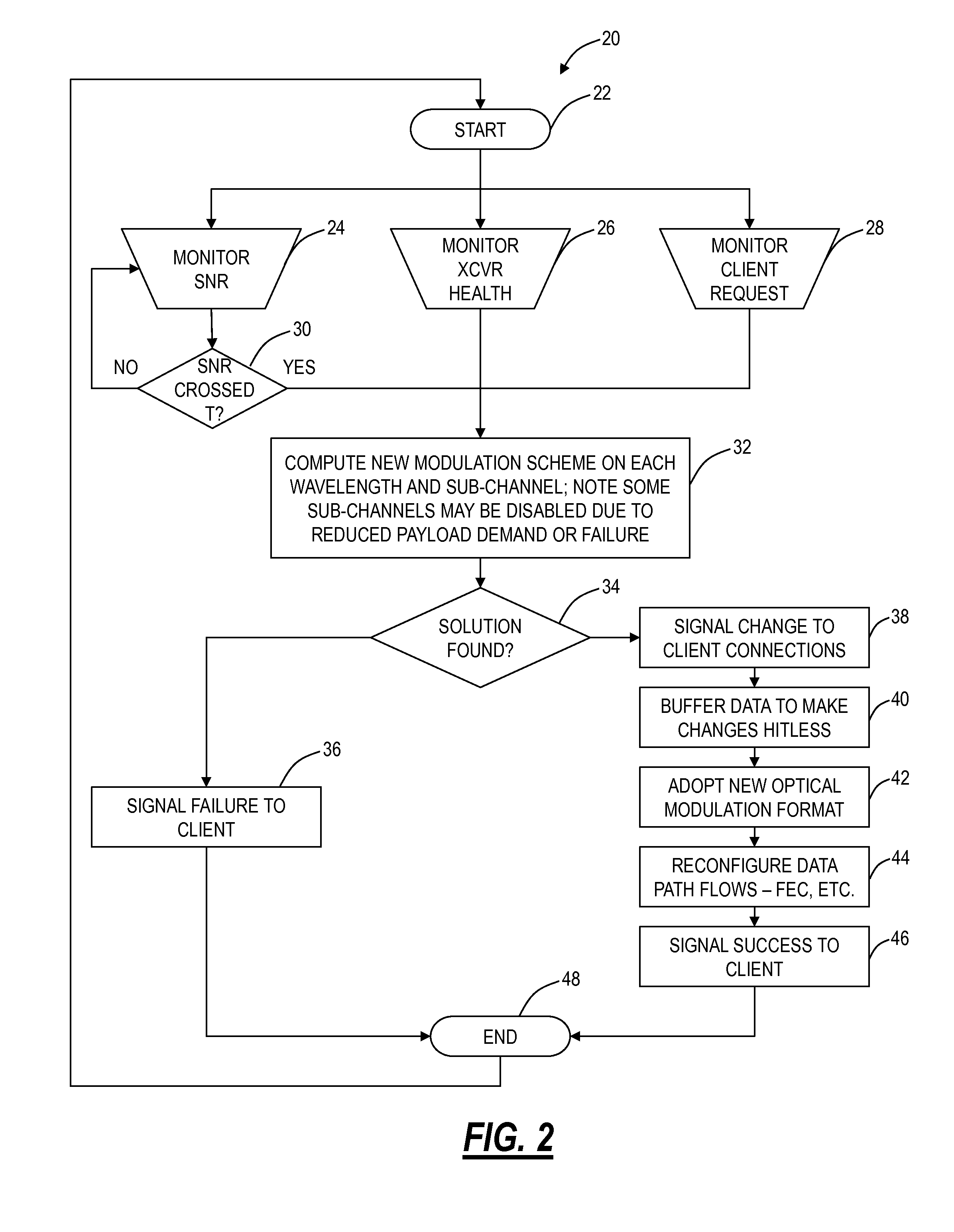High speed optical communication systems and methods with flexible bandwidth adaptation
a high-speed optical communication and flexible technology, applied in the field of fiber optic transmission, can solve the problem of not having an integrated approach to manage optical bandwidth based on snr
- Summary
- Abstract
- Description
- Claims
- Application Information
AI Technical Summary
Benefits of technology
Problems solved by technology
Method used
Image
Examples
Embodiment Construction
[0019]In various exemplary embodiments, flexible bandwidth adaptation systems and methods are described for terabit optical communication systems. The flexible bandwidth adaptation systems and methods include an optical transceiver, an optical network, and methods associated therewith. The flexible bandwidth adaptation systems and methods provide scalable and fault tolerant communication over fiber, redundant transmission of data to mitigate system anomalies and hardware failures, improve on the ‘all or nothing’ network operational scenario during times of degraded SNR (i.e., protection switch or not), adapt to underlying bandwidth demands, and the like. In an exemplary embodiment, high speed optical transceivers (e.g., 100 Gbps+) include support for a plurality of modulation formats in the same device, with the selection of modulation format based on the flexible bandwidth adaptation systems and methods.
[0020]Referring to FIG. 1, in an exemplary embodiment, a diagram illustrates a ...
PUM
 Login to View More
Login to View More Abstract
Description
Claims
Application Information
 Login to View More
Login to View More - R&D
- Intellectual Property
- Life Sciences
- Materials
- Tech Scout
- Unparalleled Data Quality
- Higher Quality Content
- 60% Fewer Hallucinations
Browse by: Latest US Patents, China's latest patents, Technical Efficacy Thesaurus, Application Domain, Technology Topic, Popular Technical Reports.
© 2025 PatSnap. All rights reserved.Legal|Privacy policy|Modern Slavery Act Transparency Statement|Sitemap|About US| Contact US: help@patsnap.com



